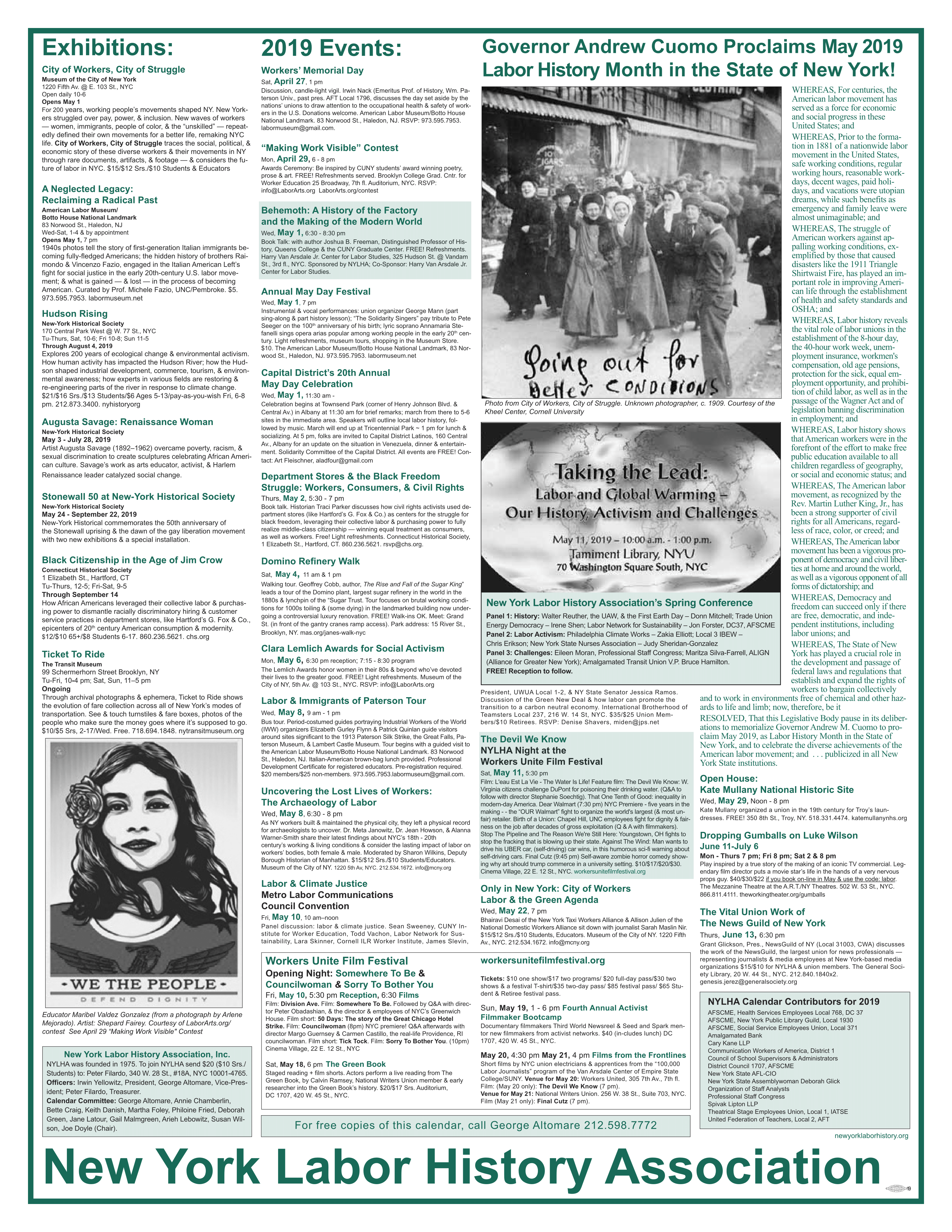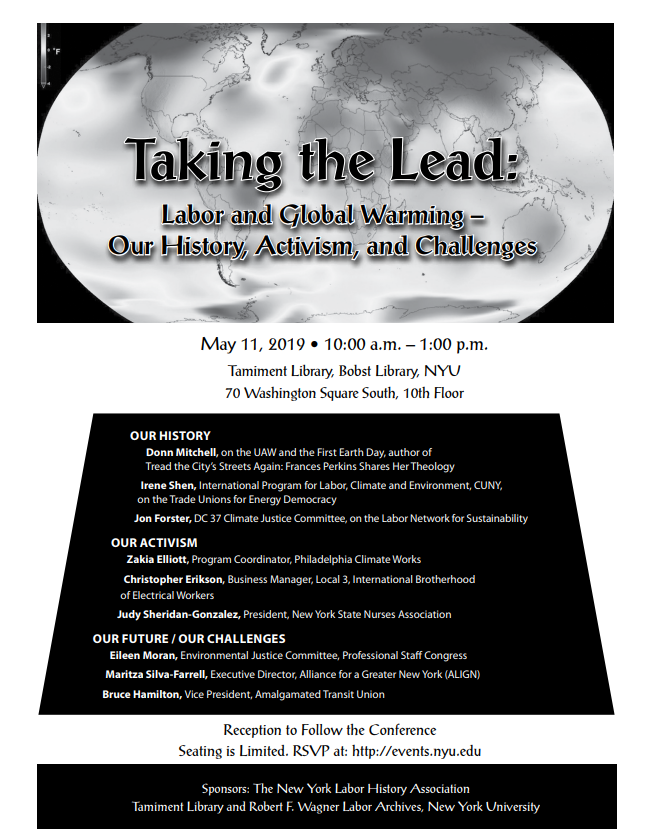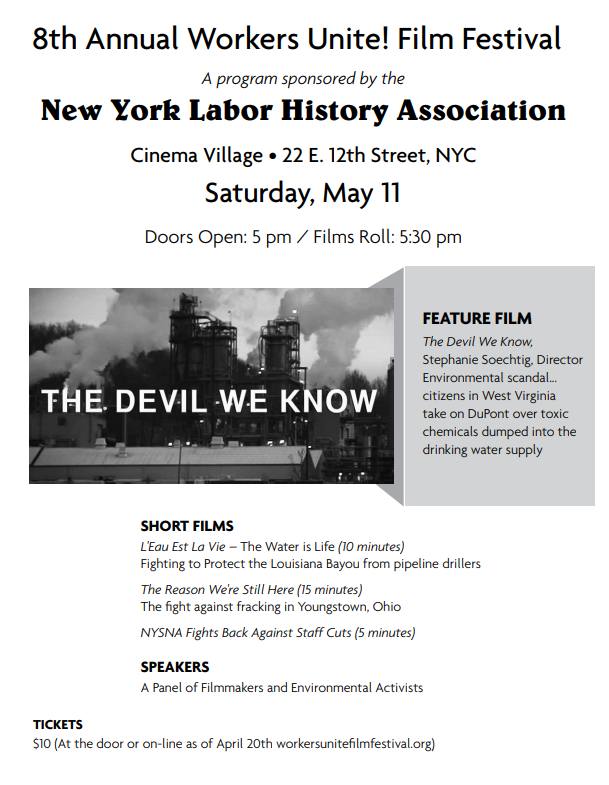May is Labor History Month!
Labor History Month is fast approaching! NYLHA always celebrates Labor History Month by producing a calendar of the exciting events taking place in the New York State area honoring labor history.
Click to download the 2019 edition of the Labor History Calendar above — and don’t forget to pass it along!



